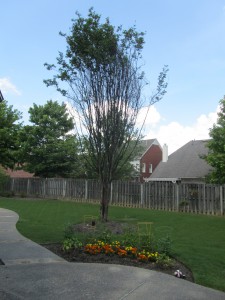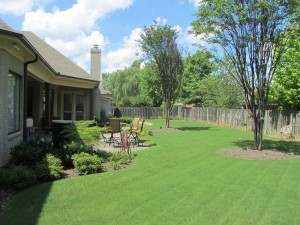Throughout the summer, one plant seems to be a mainstay in the Mid-South landscape: the Crape Myrtle (Lagerstromia indica). They are available in countless colors – red, pink, white, and purples – shapes and sizes, but they are ubiquitous. They are revered for their summer color and endless blooms.
However, the once “bullet-proof” plant has run into some trouble with a new pest – Crape Myrtle Bark Scale. The bark scale (Eriococcus lagerstromia) is still relatively new in the Mid-South – it first appeared in 2013. It is believed to affect all species and varieties of crape myrtles.
The common signs or symptoms are reduced blooms, loss of foliage, sticky coating (called honeydew) on the leaves, limbs and even surrounding sidewalks and plants and visible white insects. A secondary symptom, which is actually caused by a mold that grows on the sticky honeydew, is dark “sooty” mold on the branches and trunks. The mold can sometimes appear white as well.
These photos were recently taken by BPD of two Crape Myrtles affected by the bark scale at a Germantown residence.
There are a few ways to combat this scale as well as more detailed information which can be found in the articles below:
From the LSU Ag Center
From the University of Arkansas Ag Extension
From Woodland Tree
More information can also be found at the University of Tennessee Ag Extension website.
This disease is changing how the BPD team views the Crape Myrtle. Though they are not our favorite flowering trees, they are an integral part in the Southern landscape. A few alternatives for the Crape Myrtle are the Chaste Tree (Vitex agnus-castus), Star Magnolia (Magnolia stellata), and the Eastern Redbud (Cercis Canadensis).
Chris Cooper, the local Shelby County extension agent, and all of these websites were sources for this blog post.

